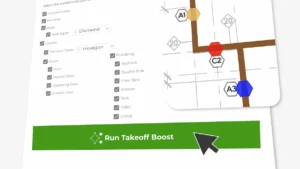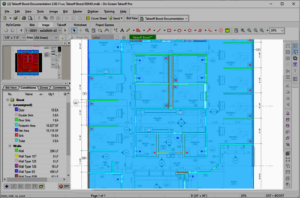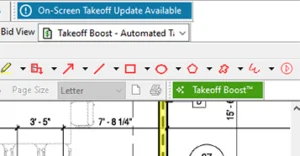Ask any cost estimator. Estimating is perfected through experience, practice, and intuition. They’ll also say estimators must doggedly pursue missing project details before finalizing their bid. Estimating can often feel like a high-stakes video game where you’re trying to avoid “Game Over” before your bid deadline.
Whether leaning on subcontractors or digging for emails in a jammed inbox, managing late information and nailing down missing details are a common part of any estimator’s bid prep. Today’s estimating scene is chaotic. Digital tools are essential for helping maneuver from project to project and gathering last-minute details.
With digital takeoff and estimating tools you can ensure your labor and material pricing is correct and rest assured your final bid is in order. Presenting an organized and polished final bid means knowing all quantities are counted and measured and all materials and labor are factored into the final bid.
Catch Estimating Problems Early
In fact, catching problems early and communicating them is one of the best ways to master the art of estimating. Since projects are rarely perfectly timed, cost estimators should communicate frequently to make sure both the field and the office are on the same page.
For example, material shipments may run late, trades can fall behind, and schedules will typically need to be adjusted. Also, the field will need to know any special sequences of work or methods that were promised during the bidding process.
There can also be issues if an estimator takes shortcuts with their labor estimate by making assumptions. For example, an estimator may assume labor is the base wage plus 26%. Making sure to check with the accounting department can help you determine what makes up your true labor cost. This includes the actual cost for an employee, aside from their salary. Also, don’t forget to factor in the accurate hourly rate when hiring specialty labor or craftsmen.
5 Tips to Build a Better Bid
For most estimators and contractors, the success of any project comes down to how well they interpreted the original project design—and holding down rework and delays to a minimum. Much of this can be tied to how well they manage the project and keep track of project details and cost through to build-out, including material costs. This process always begins with a detailed takeoff and estimate.
Ready to build better bids? Here are five tips any estimator should keep in mind that could make the difference between winning or losing a bid:
- Make sure attachments are clear so you can intentionally show specific things that are covered in your bid—especially those hidden items others may have overlooked.
- Show real scope by telling the client how your work will be completed versus just what they requested.
- Show quantities and details by over-communicating so the client is clear that your bid included the full scope of work.
- Reference the specs as part of your decision-making process to show respect and knowledge of the project’s goals.
- Anticipate what other trades will need to show how your trade/scope of work interrelates with another contractor’s work so you can show how you will accommodate others.
Going Digital to Win the Profitability Battle
How do estimators beat back some of the chaos and uncertainty when bidding in an era of razor-thin profit margins? Many contractors say using job costing software alongside takeoff and estimating software helps them gain even greater visibility into why jobs don’t go as planned.
Clearly, digital estimating tools can help any estimator and contractor gather better, more detailed information, and leverage historical records from previous jobs. As a result, they can accurately compare job costs against the original estimate and more efficiently boost profits and achieve growth.



